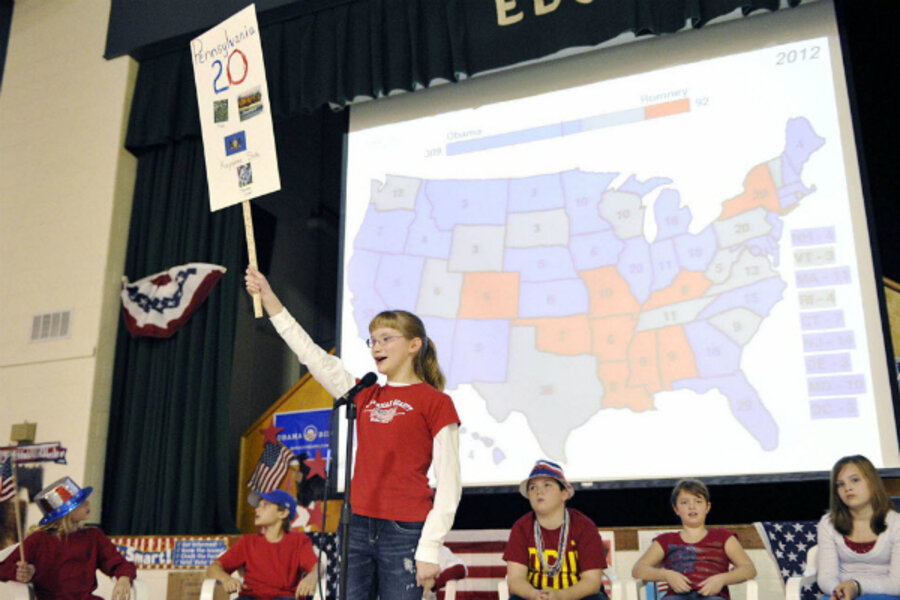A tie vote in the US Electoral College is unprecedented, but there are several plausible ways to come up one vote short of the 270 needed to elect a president, just by juggling the outcome in toss-up states.
Five scenarios proposed by the interactive website 270towin are anchored by a Romney win in Florida, with its 29 electoral votes. One tie-making combination adds wins for Romney in Ohio (18), North Carolina (15), Wisconsin (10), and Iowa (6). A loss in Wisconsin, which appears to be trending more in favor of Obama, could be replaced by wins in New Hampshire (4) and Nevada (6) and still maintain a tie.
Another scenario assumes a Romney win in Florida but not the key battleground state of Ohio (18). But that combination produces a tie only if Romney can also capture North Carolina (15), Virginia (13), Colorado (9), Nevada (6), and Iowa (6).
The 1824 election came close to simulating a tie when war hero Andrew Jackson won the popular vote but failed to reach the threshold in the Electoral College to be elected president, so the election was thrown into the House and decided by a "corrupt bargain" that elected John Quincy Adams. The bitterness over this backroom deal lasted generations. Similarly, the 2000 contested election spawned criticism and even contempt for the political process. An Obama victory in the Electoral College but not in the popular vote – or a House vote that secures the presidency for Romney along partisan lines – could have a similar effect in Election 2012.
"If the presidential election were thrown to a seemingly dysfunctional Congress, it would necessarily be unpalatable to much of the country," says Julian Zelizer, a congressional historian at Princeton University. "I see all the scenarios and they sound very troublesome."








